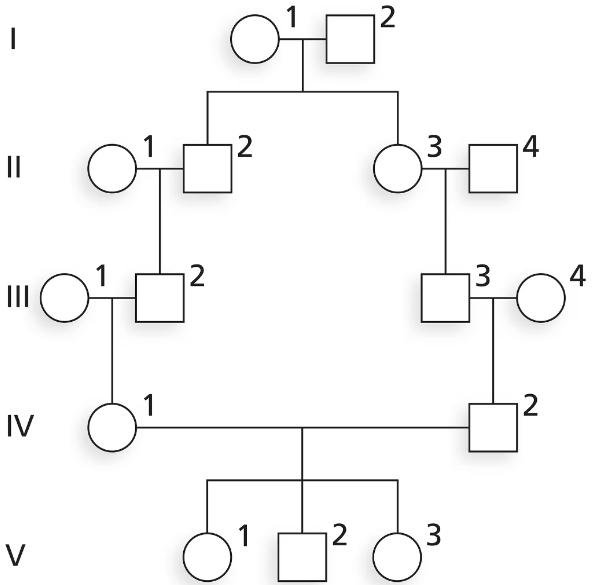The original source of new alleles, upon which selection operates, is mutation, a random event that occurs without regard to selectional value in the organism. Although many model organisms have been used to study mutational events in populations, some investigators have developed abiotic molecular models. Soll et al. (2006. Genetics 175: 267-275) examined one such model to study the relationship between both deleterious and advantageous mutations and population size in a ligase molecule composed of RNA (a ribozyme). Soll found that the smaller the population of molecules, the more likely it was that not only deleterious mutations but also advantageous mutations would disappear. Why would population size influence the survival of both types of mutations (deleterious and advantageous) in populations?
Table of contents
- 1. Introduction to Genetics51m
- 2. Mendel's Laws of Inheritance3h 37m
- 3. Extensions to Mendelian Inheritance2h 41m
- 4. Genetic Mapping and Linkage2h 28m
- 5. Genetics of Bacteria and Viruses1h 21m
- 6. Chromosomal Variation1h 48m
- 7. DNA and Chromosome Structure56m
- 8. DNA Replication1h 10m
- 9. Mitosis and Meiosis1h 34m
- 10. Transcription1h 0m
- 11. Translation58m
- 12. Gene Regulation in Prokaryotes1h 19m
- 13. Gene Regulation in Eukaryotes44m
- 14. Genetic Control of Development44m
- 15. Genomes and Genomics1h 50m
- 16. Transposable Elements47m
- 17. Mutation, Repair, and Recombination1h 6m
- 18. Molecular Genetic Tools19m
- 19. Cancer Genetics29m
- 20. Quantitative Genetics1h 26m
- 21. Population Genetics50m
- 22. Evolutionary Genetics29m
21. Population Genetics
Allelic Frequency Changes
Problem 34c
Textbook Question
Evaluate the following pedigree, and answer the questions below. Calculate F for any inbred members of this family.

 Verified step by step guidance
Verified step by step guidance1
Step 1: Understand the concept of inbreeding coefficient (F). The inbreeding coefficient measures the probability that two alleles at a locus are identical by descent. It is calculated using the formula: , where is the probability of a specific path and is the inbreeding coefficient of the common ancestor.
Step 2: Identify the inbred members in the pedigree. Look for individuals whose parents are related (e.g., cousins, siblings, or other relatives). These individuals are likely to have an inbreeding coefficient greater than zero.
Step 3: Trace all possible paths through which alleles could be inherited from a common ancestor to the inbred individual. For each path, calculate the probability of inheritance using the rules of Mendelian genetics. For example, if the common ancestor is a grandparent, the probability of inheritance through one path is .
Step 4: Sum the probabilities of all paths leading to the inbred individual. Multiply this sum by the inbreeding coefficient of the common ancestor (if the ancestor is not inbred, their coefficient is 0). This gives the inbreeding coefficient for the individual.
Step 5: Repeat the calculation for each inbred member of the family. Ensure that you account for all possible paths and common ancestors for each individual.
 Verified video answer for a similar problem:
Verified video answer for a similar problem:This video solution was recommended by our tutors as helpful for the problem above
Video duration:
2mPlay a video:
Was this helpful?
Key Concepts
Here are the essential concepts you must grasp in order to answer the question correctly.
Pedigree Analysis
Pedigree analysis is a method used to study the inheritance patterns of traits in families. It involves creating a diagram that represents family relationships and the occurrence of specific genetic traits across generations. This visual representation helps identify whether traits are dominant, recessive, or linked to sex, which is crucial for understanding genetic inheritance.
Recommended video:
Guided course

Pedigree Flowchart
Inbreeding Coefficient (F)
The inbreeding coefficient (F) quantifies the probability that two alleles at a locus are identical by descent due to inbreeding. It ranges from 0 (no inbreeding) to 1 (complete inbreeding). Calculating F involves analyzing the pedigree to determine the degree of relatedness between individuals, which is essential for assessing the genetic health of a population.
Recommended video:
Guided course

F Factor and Hfr
Genetic Relatedness
Genetic relatedness refers to the proportion of shared genetic material between individuals, often expressed as a percentage. In pedigree analysis, relatedness helps determine the likelihood of inheriting specific alleles from common ancestors. Understanding genetic relatedness is vital for calculating the inbreeding coefficient and evaluating the potential risks of inbreeding depression in a family.
Recommended video:
Guided course

Descriptive Genetics
Related Videos
Related Practice
Textbook Question
447
views


